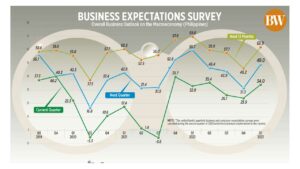Cross-border exchange of tax-related information

With the continuing improvement of information and technology, it is becoming easier and easier for taxpayers to transact business on a global scale. While this situation provides a number of opportunities, issues with tax administration appear to be an inevitable consequence. One of the main issues is the risk the taxpayer will shift revenue to a low-tax country.
Thus, in an effort to deter tax fraud and evasion, the various tax jurisdictions have resorted to exchanging information. The Bureau of Internal Revenue (BIR) issued Revenue Regulation (RR) 11–2022. It prescribes the guidelines for the spontaneous exchange of taxpayer specific rulings between the Philippines and other countries to ensure the timely exchange of information.
The spontaneous exchange of information provides tax administrators access to timely information on rulings that have been granted to a foreign related party or a permanent establishment of their resident taxpayer, which can be used in conducting risk assessments.
Information subject to exchange include rulings related to preferential regime; cross-border unilateral Advance Pricing Arrangements (APAs) and any other cross-border unilateral tax ruling covering transfer pricing or the application of transfer pricing principles; cross-border rulings giving a unilateral downward adjustment to the taxpayer’s taxable profits in the country giving the ruling; Permanent Establishment (PE) rulings; and Related party conduit rulings.
How will the above spontaneous exchange of information affect Philippine taxpayers?
In RR 11-2022, the BIR mentioned the following:
• If the past ruling does not contain sufficient information to enable identification of the relevant countries with which the information needs to be exchanged, the BIR may obtain information from the domestic withholding agent or from a representative in the Philippines. These past rulings pertain only to PE rulings or rulings concerning the existence or absence of a PE of a foreign enterprise in the Philippines that were issued either:
a. On or after Jan. 1, 2015 but before Sept. 1, 2017; or
b. On or after Jan. 1, 2012 but before Jan. 1, 2015, provided they were still in effect as of Jan. 1, 2015.
• With regard to future rulings, the BIR may require the amendment of the ruling process, and if necessary, the amendment of the BIR Forms that must be submitted by the taxpayer when requesting a confirmatory ruling, and the inclusion of transfer pricing documentation as part of the documentary requirements among others.
• Also, for those rulings exchanged with the BIR, if it is established, upon evaluation, that the ruling will aid the tax examiners in their tax investigation, a copy thereof shall be immediately forwarded to the Revenue District Office having jurisdiction over the domestic taxpayer.
Hence, at the very least, a Philippine taxpayer may be asked for information by the BIR; there could also be changes in the taxpayer’s submission of request for BIR rulings, and a Philippine taxpayer may also be affected by the exchange of information during a BIR audit investigation.
It will also be noted above that, basically, the covered entities of the exchange of information are the related parties.
WHAT SHOULD THE PHILIPPINE TAXPAYERS DO THEN?The following should be considered by Philippine taxpayers:
1. Ensure that the Philippine taxpayer is dealing with its foreign related parties on an arm’s length basis.
According to the Organization for Economic Cooperation and Development (OECD), arm’s length means that a transaction between related entities reflects the conditions and remuneration set in comparable transactions between unrelated entities. Thus, in transacting business with foreign related parties, transfer pricing analysis must be considered to verify whether the transactions with related entities comply with the arm’s length principle. The pricing of the goods or services must be assessed, to ensure that this is comparable to the pricing of independent entities in more or less similar conditions and circumstances.
2. Document the reasonableness of the transaction.
The issuances of the BIR on transfer pricing detail the requirements for the submission of transfer pricing documentation (TPD). The authorities have given taxpayers certain guidelines to follow in preparing TPD in compliance with transfer pricing rules. The TPD will serve as the taxpayer’s proof that its transactions with related parties are not arbitrarily priced, and that there is no malicious shifting of revenue and expenses among the related parties.
The above actions would be helpful in a taxpayer’s preparations for possible application for a tax ruling with the BIR in the future. At any rate, even without thinking about a possible application for a tax ruling in the future, a taxpayer is required to ensure that its transactions with related parties are reasonable and not carried in a manner leading to tax evasion.
As we know, cross-border transactions are growing rapidly as technology has been making the world smaller. The tax authorities have also been adapting to this. The exchange of information is part of the process of addressing possible gaps in the tax system. As taxpayers, in turn, we should also take care to ensure that we comply with international tax principles and best practices.
Let’s Talk Tax is a weekly newspaper column of P&A Grant Thornton that aims to keep the public informed of various developments in taxation. This article is not intended to be a substitute for competent professional advice.
Maricel P. Katigbak is a senior manager of the Tax Advisory & Compliance division of P&A Grant Thornton, the Philippine member firm of Grant Thornton International Ltd.




